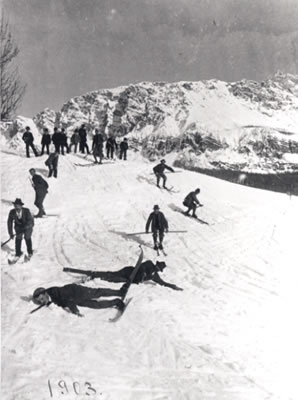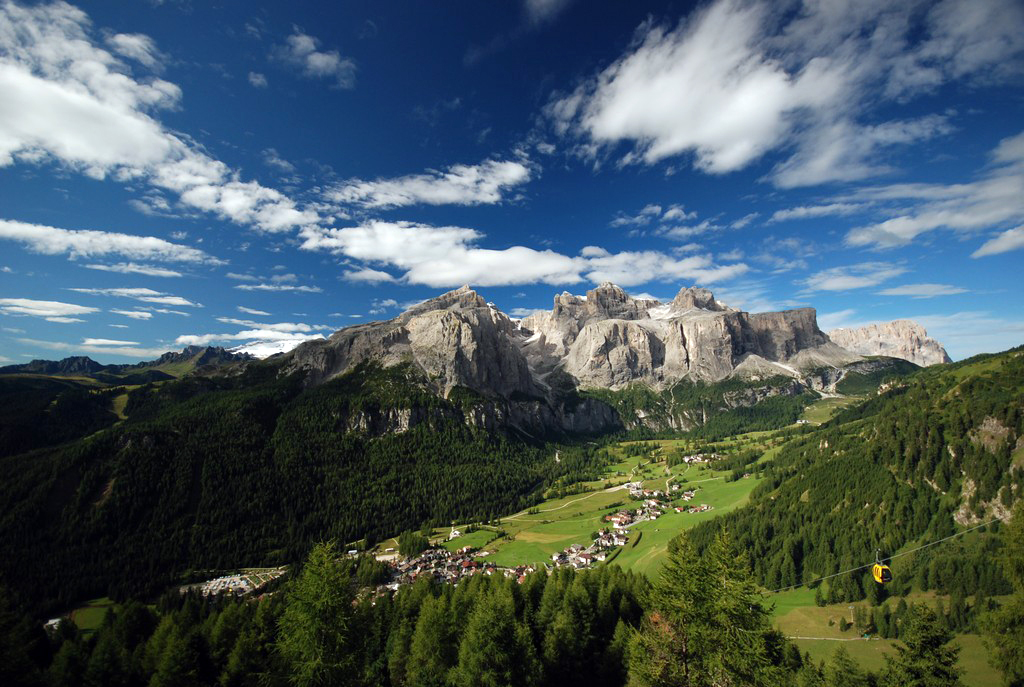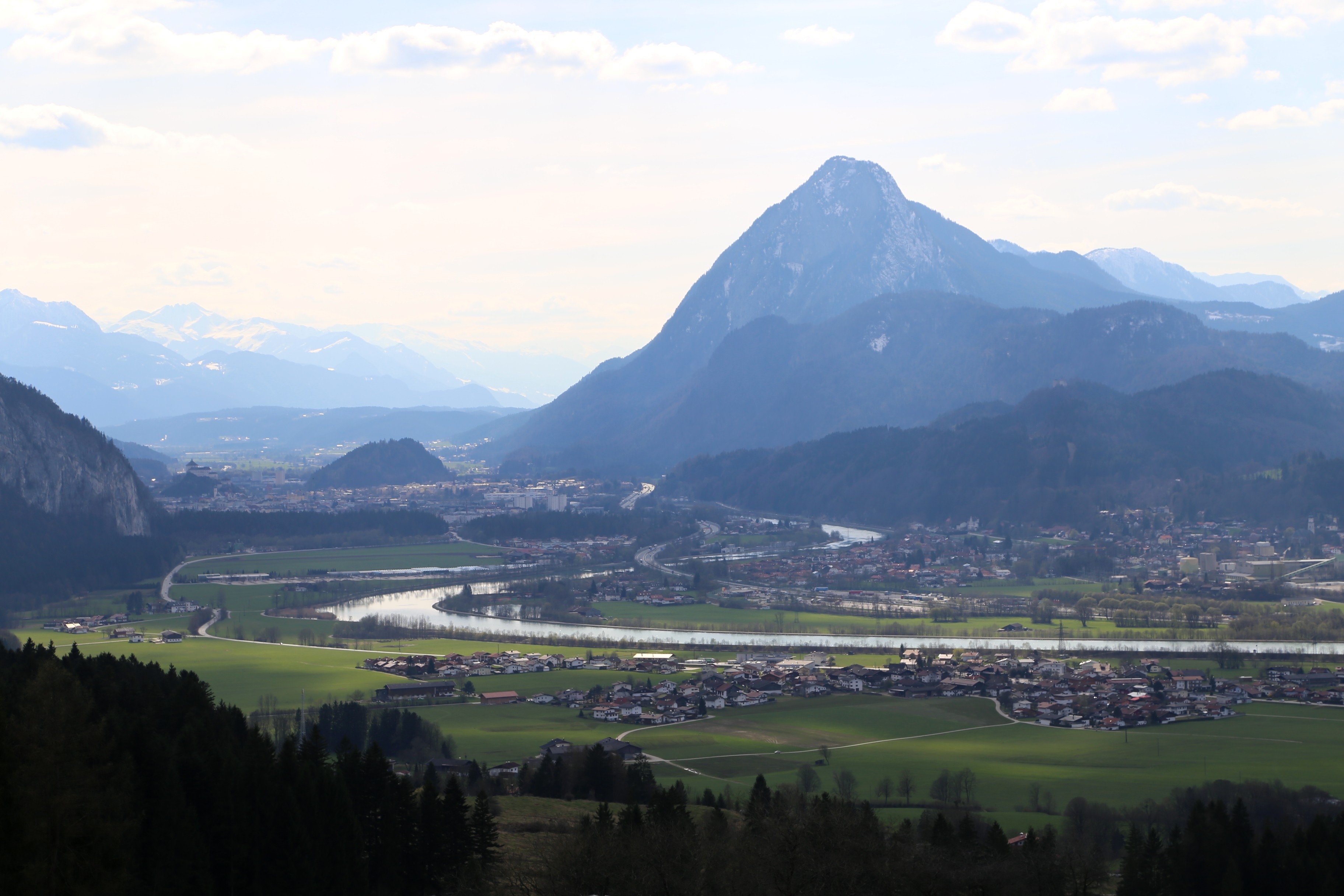|
Ladins
The Ladins are an ethnolinguistic group of northern Italy. They are distributed in several valleys, collectively known as Ladinia. These valleys include the valleys of Val Badia, Badia and Val Gardena, Gherdëina in South Tyrol, of Fassa Valley, Fassa in Trentino, and of Livinallongo del Col di Lana, Livinallongo (also known as Buchenstein or Fodom) and Cortina d’Ampezzo, Ampezzo in Province of Belluno, Belluno. Their native language is Ladin language, Ladin, a Rhaeto-Romance languages, Rhaeto-Romance language related to the Switzerland, Swiss Romansh language, Romansh and Friulian language, Friulian languages. Ladinia is located in the historical region of Tyrol, and Ladins share that region's culture, history, traditions, environment and architecture. Ladins developed a formal national identity in the 19th century. Micurà de Rü undertook the first attempt to develop a written form of the Ladin language. Ladin culture is promoted by the government-sponsored cultural institut ... [...More Info...] [...Related Items...] OR: [Wikipedia] [Google] [Baidu] |
Ladin Language
Ladin ( , ; autonym: ; ; ) is a Romance languages, Romance language of the Rhaeto-Romance languages, Rhaeto-Romance subgroup, mainly spoken in the Dolomites, Dolomite Mountains in Northern Italy in the provinces of South Tyrol, Trentino, and Province of Belluno, Belluno, by the Ladin people. It exhibits similarities to Romansh language, Romansh, which is spoken in Switzerland, as well as to Friulian language, Friulian, which is spoken in northeast Italy. The precise extent of the Ladin language area is a subject of scholarly debate. A narrower perspective includes only the dialects of the valleys around the Sella group, while wider definitions comprise the dialects of adjacent valleys in the Province of Belluno and even dialects spoken in the northwestern Trentino. A standard language, standard variety of Ladin () has been developed by the Office for Ladin Language Planning as a common communication tool across the whole Ladin-speaking region. Geographic distribution Lad ... [...More Info...] [...Related Items...] OR: [Wikipedia] [Google] [Baidu] |
Flag Of Ladins
The flag of Ladins is horizontal tricolour of blue, white, and green. The Ladin people are an ethnic group in northern Italy. In 2024, the Regional Council of Trentino-Alto Adige/Südtirol recognized the flag, allowing it to be officially displayed in municipalities next to the Italian tricolour. Overview The flag symbolizes the landscape: blue for the sky, white for the mountains and green for the meadows. The flag was introduced in 1920 during the Ladin Congress. It is unclear whether the flag was allowed during the time of Italian fascism. There are some which have also symbols or even coats of arms of Ladin families or municipalities, but these are only created by irrelevant people or organizations, no official institutions. Examples for symbols based on the flag are the coat of arms of Canazei or the logo of the Ladin Autonomist Union. The vertical version is less popular, but widespread especially outside of South Tyrol South Tyrol ( , ; ; ), officially the Autono ... [...More Info...] [...Related Items...] OR: [Wikipedia] [Google] [Baidu] |
Cortina D’Ampezzo
Cortina d'Ampezzo (; , ; historical ) sometimes abbreviated to simply Cortina, is a town and ''comune'' in the heart of the southern (Dolomites, Dolomitic) Alps in the province of Belluno, in the Veneto region of Northern Italy. Situated on the Boite (river), Boite river, in an alpine valley, it is an upscale summer and winter sport resort known for its skiing trails, scenery, accommodation, shops and après-ski scene, and for its jet set and Italian aristocratic crowd. In the Middle Ages, Ampezzo fell under the jurisdiction of the Patriarchate of Aquileia (State), Patriarchate of Aquileia and of the Holy Roman Empire. In 1420 it was conquered by the Republic of Venice. From 1508, it then spent much of its history under Habsburg rule, briefly undergoing some territorial changes under Napoleon, before being returned to the Austrian Empire (later Austria-Hungary), which held it until 1918. From the nineteenth century, Cortina d'Ampezzo became a notable regional centre for crafts. ... [...More Info...] [...Related Items...] OR: [Wikipedia] [Google] [Baidu] |
Romansh People
The Romansh people (also spelled Romansch, Rumantsch, or Romanche; , ''rumàntschs'', ''romauntschs'' or ''romontschs'') are a Romance ethnic group, the speakers of the Romansh language, native to the Swiss canton of Grisons (Graubünden). The Romansh speaking population is collectively known as Rumantschia in Romansh (alternatively ''rumantschadad'', Vallader: ''rumantschità'', Sursilvan: ''romontschadad''). This term has come to replace the German official legal term of "Gemeinschaft der Bündner Romanen" introduced in 1982.Lexicon istoric retic s.v. Rumantschia , they make up about 45,000 inhabitants of Switzerland, or 0.85% of its population, and about 30,000 inhabitants of the canton of Grisons (14.7% of its population). cited as 44,354 ± 4.0%. This amounts to a confidence interval of 42,500–46,200. [...More Info...] [...Related Items...] OR: [Wikipedia] [Google] [Baidu] |
Rhaeto-Romance Languages
Rhaeto-Romance, Rheto-Romance, Rhaeto-Italian, or Rhaetian, is a purported subfamily of the Romance languages that is spoken in south-eastern Switzerland and north-eastern Italy. The name "Rhaeto-Romance" refers to the former Roman province of Raetia. The question of whether these languages actually form a subfamily is called the . The Italian linguist Graziadio Ascoli, writing in 1873, found them to share a number of intricacies and believed they formed a linguistic group. The Rhaeto-Romance languages differ from Italian in their evolution from Latin by having passed through a stage with phonemic vowel length, undergone certain consonant developments, and possibly developed a pair of central rounded vowels (now lost everywhere). If the subfamily is genuine, three languages would belong to it: Romansh in Switzerland, and Ladin and Friulian in Italy. Their combined number of speakers is about 660,000; the large majority of these (about 500,000) speak Friulian. Origin Bef ... [...More Info...] [...Related Items...] OR: [Wikipedia] [Google] [Baidu] |
Trentino
Trentino (), officially the Autonomous Province of Trento (; ; ), is an Autonomous province#Italy, autonomous province of Italy in the Northern Italy, country's far north. Trentino and South Tyrol constitute the Regions of Italy, region of Trentino-Alto Adige/Südtirol, an autonomous region under the constitution. The province is composed of 166 ''comuni'' (: ''comune''). Its capital is the city of Trento (Trent). The province covers an area of more than , with a total population of 541,098 in 2019. Trentino is renowned for its Mountain, mountains, such as the Dolomites, which are part of the Alps. Etymology The province is generally known as "Trentino". The name derives from Trento, the capital city of the province. Originally, the term was used by the local population only to refer to the city and its immediate surroundings. Under former Austrian Empire, Austrian rule, which began in the 19th century (previously, Trentino was governed by the local bishop), the common German ... [...More Info...] [...Related Items...] OR: [Wikipedia] [Google] [Baidu] |
Istitut Ladin Micurà De Rü
The Istitut Ladin Micurà de Rü is a government-financed cultural institute in South Tyrol, Italy, tasked with preserving and promoting the Ladin language and culture. Foundation and name The institute was set up by the Autonomous Province Bolzano – South Tyrol on 31 July 1976 and formally started its activity on 3 September 1977 in the Ladin village San Martin de Tor. The institute was named in honour of the Ladin linguist Micurà de Rü, who in 1833 published the first Ladin grammar ''"Versuch einer deütsch-ladinischen Sprachlehre"''. The institute's main objectives are: * to scientifically study the language, the history and the culture of the Ladin people. * to promote the use and teaching of the Ladin language in cooperation with the schools in Ladin communes and the Ladin Pedagogical Institute. * to preserve and cultivate the culture, customs and traditions, art and music of the Ladin people. * to support all venues that help to preserve the oral and written Ladin l ... [...More Info...] [...Related Items...] OR: [Wikipedia] [Google] [Baidu] |
Friulians
Friulians, also called Friulans or Furlans (, Italian: ''Friulani''), are an ethnolinguistic minority living primarily in Italy, with a significant diaspora community. Friulians primarily inhabit the region of Friuli and speak the Rhaeto-Romantic language Friulian, which is closely related to Ladin, spoken primarily in South Tyrol/Alto Adige, and Romansh, native to the Canton of Grisons in Switzerland. Distribution About 600,000 Friulians live in the historical region of Friuli and in parts of Veneto. As the Friulian language's use has decreased, there are likely around 1 million in total, with an increasing amount speaking Italian as a first language. Some other thousands live in diaspora communities in the United States, Canada, Argentina, Brazil, Uruguay, Venezuela, Australia, and Belgium. They traditionally speak Friulian language, Friulan, a distinct Rhaeto-Romance language which is the second largest recognized minority language in Italy Italy, officially the ... [...More Info...] [...Related Items...] OR: [Wikipedia] [Google] [Baidu] |
Ladinia
Ladinia is a neologism used to describe an Alpine region in the Dolomites mountain range of Northern Italy, divided between the Italian provinces of Belluno, South Tyrol, and Trentino. The area takes its name from its inhabitants, the Ladin people, a Romance-speaking ethnic group. Their Ladin language is generally considered a Rhaeto-Romance language, though there is a scientific debate if it forms part of a wider northern Italian dialect continuum. History As a Rhaeto-Romance language, Ladin was part of a large area, which about 1000 AD stretched from Ticino (''Tessin'') and Grisons in the Swiss Alps to the Julian Alps (in present-day Slovenia) in the east. The Ladin people developed a national identity during the 19th century, when most of the area—except for the Venetian parts—was incorporated into the Princely County of Tyrol and, as part of the Austrian Empire, underwent a process of Germanisation. The local peasants were called '' Welsche'' by Germans (similar to '' ... [...More Info...] [...Related Items...] OR: [Wikipedia] [Google] [Baidu] |
Ladinia Towns
Ladinia is a neologism used to describe an Alpine region in the Dolomites The Dolomites ( ), also known as the Dolomite Mountains, Dolomite Alps or Dolomitic Alps, are a mountain range in northeastern Italy. They form part of the Southern Limestone Alps and extend from the River Adige in the west to the Piave Va ... mountain range of Northern Italy, divided between the Italian Provinces of Italy, provinces of Province of Belluno, Belluno, South Tyrol, and Trentino. The area takes its name from its inhabitants, the Ladin people, a Romance language, Romance-speaking ethnic group. Their Ladin language is generally considered a Rhaeto-Romance languages, Rhaeto-Romance language, though there is a Questione Ladina, scientific debate if it forms part of a wider northern Italian dialect continuum. History As a Rhaeto-Romance language, Ladin was part of a large area, which about 1000 AD stretched from Ticino (''Tessin'') and Grisons in the Swiss Alps to the Julian Alps (in pre ... [...More Info...] [...Related Items...] OR: [Wikipedia] [Google] [Baidu] |
Tyrol
Tyrol ( ; historically the Tyrole; ; ) is a historical region in the Alps of Northern Italy and western Austria. The area was historically the core of the County of Tyrol, part of the Holy Roman Empire, Austrian Empire and Austria-Hungary, from its formation in the 12th century until 1919. In 1919, following World War I and the dissolution of Austria-Hungary, it was divided into two modern administrative parts through the Treaty of Saint-Germain-en-Laye (1919), Treaty of Saint-Germain-en-Laye: * State of Tyrol (state), Tyrol: Formed through the merger of North Tyrol, North and East Tyrol, as part of Austria. * Region of Trentino-Alto Adige: At that time still with Souramont (Cortina d'Ampezzo, Livinallongo del Col di Lana and Colle Santa Lucia) and the municipalities Valvestino, Magasa, Lombardy, Magasa, and Pedemonte. This was seized in 1918 by the Kingdom of Italy, and since 1946 has been part of the Italy, Italian Republic. With the founding of the European region Tyrol- ... [...More Info...] [...Related Items...] OR: [Wikipedia] [Google] [Baidu] |





